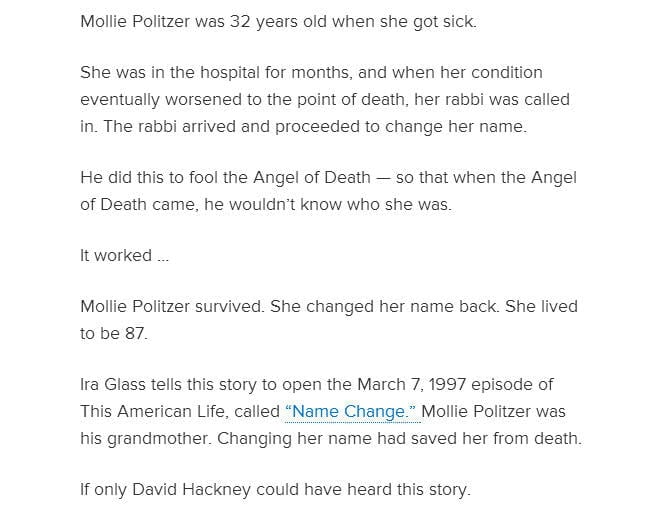
Understanding Why Students Avoid Writing
If parents and teachers understand why some students hate writing , they can targeted solution to address students’ reluctance. Learn some reasons students avoid writing, and how increasing the automaticity of writing skills and underscoring an appreciation for the purpose of writing can help.
It is common for students in today’s educational system to dislike and/or avoid the writing process. Many students feel writing takes too long. For some, writing is a very laborious task because there are so many sub-components which need to be pulled together. For others, the reason lies in some processing difficulties, such as dyslexia or dysgraphia . Some educators wonder if students no longer enjoy the slower, more refined process of written communication because they spend so much time watching the faster-paced visual modality of television.
Students with learning problems, even those who read well, frequently submit written work which is brief and/or difficult to read. Such students can be victims of misunderstandings, a problem which becomes much more pronounced at the secondary level. “Accusations of laziness, poor motivation, and a reprehensible attitude are often directed toward deficit writers. The results can be a serious loss of incentive, a generalized academic disenchantment and demoralization” (Levine 1998, 363).
- They have a hard time getting started and feel overwhelmed by the task.
- They need to concentrate to form letters: it is not an automatic process.
- They struggle to organize and use mechanics of writing.
- They are slow and inefficient in retrieving the right word(s) to express an idea.
- They struggle to develop their ideas fluently (poor ideation).
- They struggle to keep track of their thoughts while also getting them down on paper.
- They feel that the process of writing on paper is slow and tedious.
- They feel that the paper never turns out the way they want.
- They realize that the paper is still sloppy even though substantial time and effort were spent.
- They are dysgraphic, which causes multiple struggles at the basic processing levels.
- They are dyslexic, which causes very poor spelling and interferes with automatic use of writing mechanics.
As parents and teachers, we can help students deal with their lack of enjoyment of the writing process and also with poor skill development. The techniques are twofold. Students need to:
When students have a combination of this understanding and the skills, they are then free to apply techniques and abilities in a wide range of situations. This is especially true and necessary for dyslexic and/or dysgraphic students who are compensating for processing inefficiencies in the language domain.
Overall guidelines to help students avoid the avoidance of writing
There are many reasons a student may avoid writing, but most relate to the concept that writing is not fun or enjoyable. When writing is not meaningful, it is difficult to pull together the variety of skills needed to develop enthusiasm about writing. Students learn to write by writing, which then gives them the confidence to continue to write and continue to develop their skills. Using a variety of modalities can help create enthusiasm for writing and help students view writing as a more meaningful activity.
It is also important to analyze the lower level skills to ensure that the student has appropriately developed automaticity in these skills. When students are frustrated with individual components related to the task of writing and/or when they struggle to get started or to keep track of their thoughts, then the writing process is not fun, and their lack of enthusiasm becomes evident. Writing remains at the level of drudgery no matter how exciting the topic and students may feel threatened by the process of writing.
The goal for these students is to reduce the frustration, struggles, and feeling of threat. Increasing automaticity of skills is required to increase overall writing automaticity for a student. When automaticity, as developed by metacognitive awareness of the writing process and use of specific strategies, is combined with skill development and bypass strategies, the student should be able to deal with the vast majority of written expression tasks. The next step is to integrate purpose and meaning to generate fun and lead to enthusiasm for writing.
Many appropriate articles can be found in the Spring 1998 issue of Perspectives, the magazine of the International Dyslexia Association . This issue focuses on the theme of technology and learning disabilities and includes the following articles which relate to dysgraphia:
Jerome Elkind (The Lexia Institute, Los Altos, CA) “Computer Reading Machines for Poor Readers.” Charles A. MacArthur, Ph.D. (University of Delaware) “Assistive Technology for Writing.” Marshall H. Raskind, Ph.D. (The Frostig Center, Pasadena, CA) “Assistive Technology for Individuals with Learning Disabilities: How Far Have We Come?” Thomas G. West (Visualization Research, Washington, D.C.) “Words to Images: Technological Change Redefines Educational Goals.” Marshall H. Raskind, Ph.D. and Toby Shaw, M.A. (The Frostig Center, Pasadena, CA) “Assistive Technology for Persons with Learning Disabilities: Product Resource List.”
Bad writing
This is a short rogues’ gallery of bad practice. It is short because we don’t want to dwell on negative examples, but it exists to offer a few warnings and to explain how problems are often caused. Most of the items have been mentioned elsewhere in advice on what to avoid, or cautions of one kind or another. I think they are worth second mention in a different context.
What are the most common causes of bad writing? Well, the fact is that many people are just not used to expressing themselves on paper at all, and can’t be expected to write fluently. Writing well requires a considerable amount of skill. Apart from that however, the following bad habits and misunderstandings cause the most problems. They are not in any particular order. Some people may be stuck with just one of these weaknesses. In the worst cases they may be suffering with more than one.
When we speak to each other, we don’t use grammatically complete sentences, careful constructions, and beautifully modulated syntax. Our utterances are often quite ungrammatical, abbreviated, and incomplete. We might say ‘She wasn’t there at home, it’ll be later when I’m going to call’. This would be acceptable in speech. But we would write ‘She was not at home, so I will call again later’.
If these habits of speech are carried over into the written language the results are usually not very good. Remember that on the page we do not have any of the other parts of spoken communication to guide us. Tone of voice, accent, stress, and facial expression are absent. The two forms of communication may both use words as their basic element, but they are two different ‘codes’.
If you wish to be understood, and if you wish to make a good impression
in the written language, then you should stay fairly close to what is called ‘Standard English’. For most forms of writing, if you want to move away from this norm, you should know what it is you are doing, and you should have a good reason for doing so.
It might be acceptable to use dialects and the irregularities of the spoken language if you were writing fiction or trying to illustrate someone’s character. In almost all types of formal writing however, your best plan is to stay close to the norm – if only because you will thereby communicate with the largest number of people. This is not to be proscriptive or fuddy-duddy. If you have the confidence and the skill, you can use whatever linguistic devices you wish – but then you would probably not be reading this book.
Some people scatter marks of punctuation like confetti throughout their writing, making little distinction between the range of devices available. Yet if it is not used accurately and consistently, this creates an unsettling effect. The sense of a statement can be rendered ambiguous or obscure. Reading can become like hacking your way through a linguistic jungle. Remember that commas, semicolons, and colons are used to create pauses of different length in the grammar and the sense of a statement (see Punctuation).
Another common form of poor punctuation occurs when one punctuation
mark is substituted for another. The most frequent abuse of this kind is
the use of the comma to string together statements which are in fact grammatically separate. They might be independent sentences, or (more usually) notes or brief ‘thoughts’.
The other extreme of the same problem is too little punctuation. This usually has the effect of leaving readers disoriented. We are not sure where one clause ends and the next begins. Unless there is great pressure to continue, we rapidly tire of trying to make sense of writing which has no stress or grammatical indicators. Let’s look at an example used elsewhere. It isn’t a particularly long sentence, but the absence of any punctuation makes it very difficult to understand at first reading.
This usually occurs either because the writer doesn’t have a firm grasp of the meaning and best use of words – or because there is a ‘straining for effect’ which goes wrong. Sometimes the two features may be combined. A local council circular [in what we might call ‘Town Hall prose’] offers the following example of the first weakness:
The council might have a ‘strong ambition’; it might have these goals as its objective; but it cannot have a ‘strong objective’, because the term ‘objective’ is an abstract noun which cannot be qualified by ‘strong’.
Long sentences should generally be avoided – unless you have very good control of grammar and syntax. This is a very common problem for beginners. Some people start out on their subject, add qualifying clauses, explanations, or digressions of some kind, then seem to forget where they have come from. Their sentences drift grammatically and usually become difficult to understand.
If we contrast the past situation where although a doctor may not have been able to cure a patient, he would have visited the patient regularly giving emotional support; with a situation that might occur today, such as the impersonal treatment of a patient using highly sophisticated technology, it could be argued that this transition has produced a less humane or compassionate system.
More Articles Like This
37 Genuine Thank You for Your Order Messages, Templates & Images
15 Spirited 4th of July Messages & Greetings for Your Customers
21 Excellent Examples of Emotional Ad Copy (+97 Words & Phrases to Try)
Source:
https://www.adlit.org/topics/writing/understanding-why-students-avoid-writing
https://mantex.co.uk/improve-your-writing-skills/bad-writing/
https://www.wordstream.com/blog/ws/2014/08/07/improve-writing-skills


